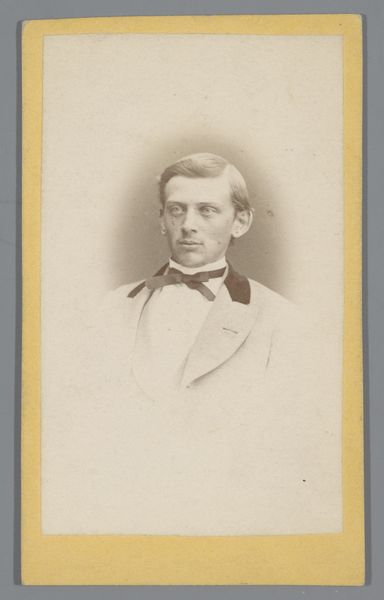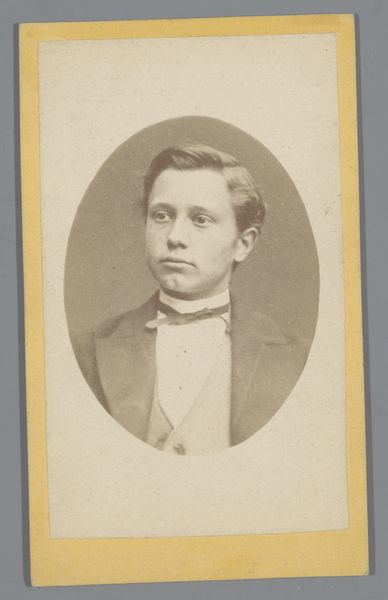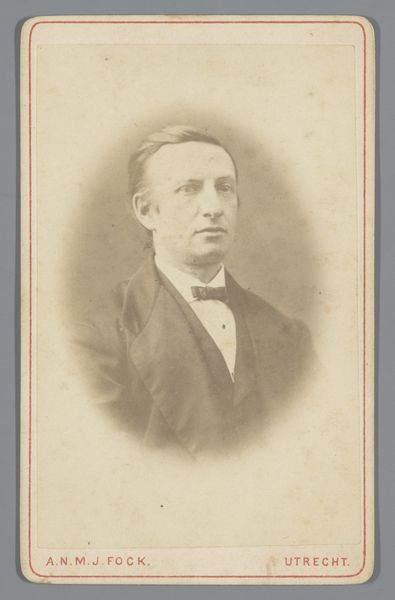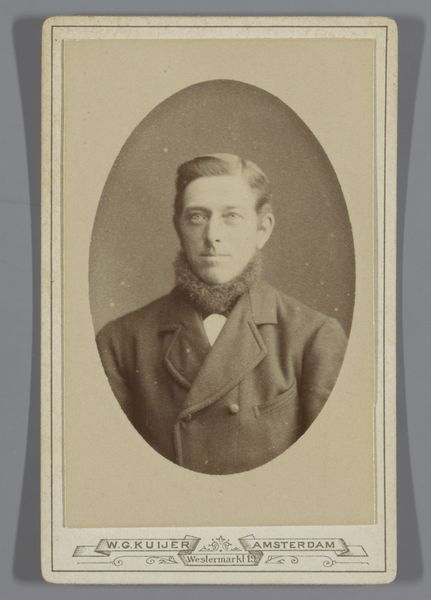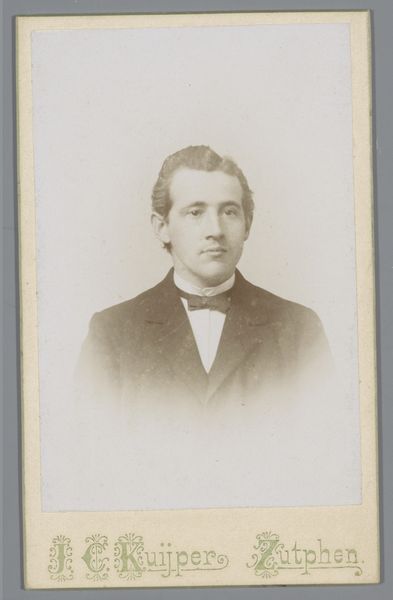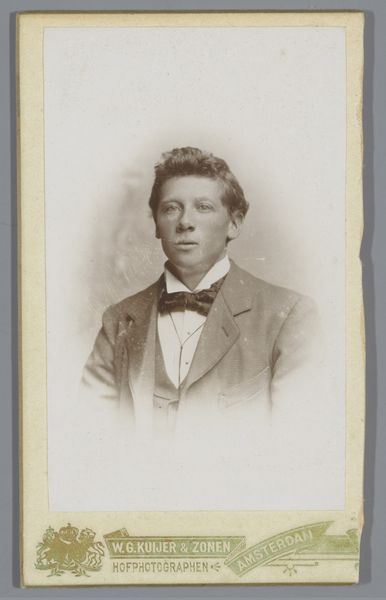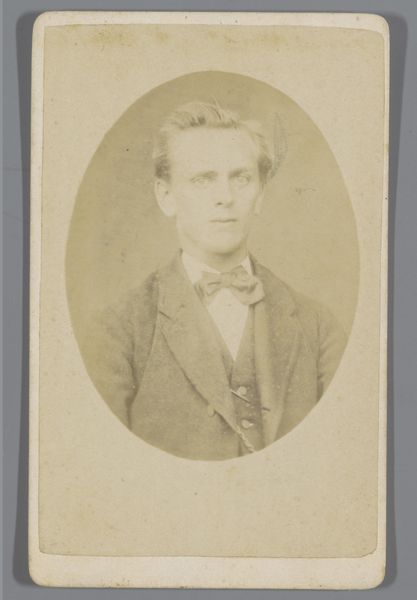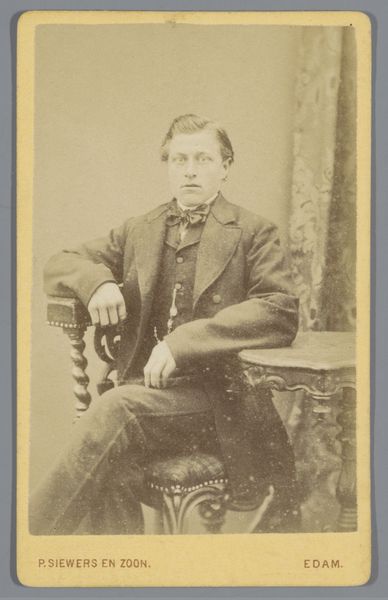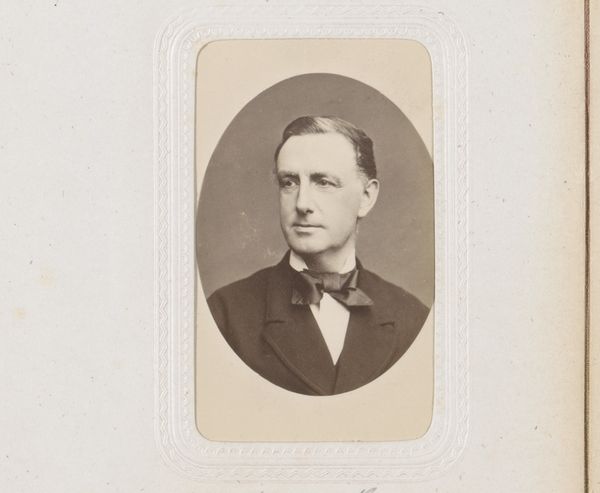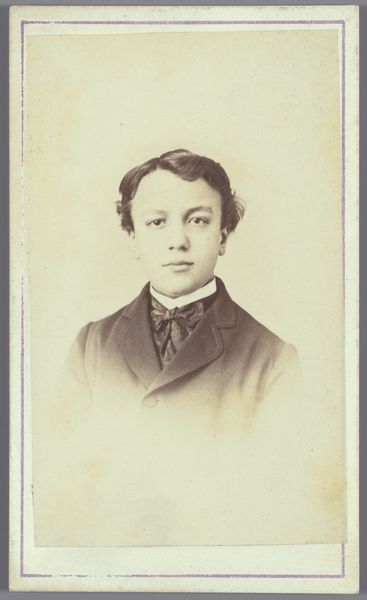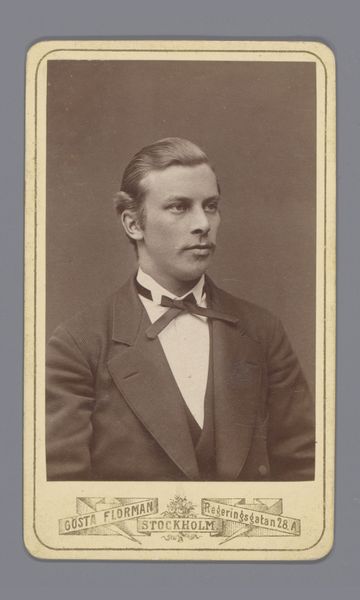
Dimensions: height 100 mm, width 63 mm
Copyright: Rijks Museum: Open Domain
Curator: Taking a look at this piece, what strikes you first? Editor: It's undeniably haunting, wouldn't you say? Those eyes… they possess a piercing quality that makes you wonder about his life, the story etched onto his face. Curator: Indeed. What we're seeing is a daguerreotype titled "Portret van een onbekende man" by Wilhelm Lundberg, created sometime between 1866 and 1877. As a daguerreotype, this isn’t just any photo; it's a unique image on a silvered copper plate. The surface is incredibly delicate. Editor: It's amazing to think about the materials and the painstaking process, that someone had to polish that silver plate until it shone like a mirror, expose it just right... Curator: Precisely, a highly polished surface also prone to tarnish. You can appreciate the time, resources, and expertise involved. It’s a far cry from our instant digital snaps! The clothing—the tailoring—speak of class, aspiration perhaps? Editor: Absolutely! He clearly put great effort into his appearance. Yet there’s something profoundly melancholic about it. Is it just me, or does he exude a certain… ennui? A world-weariness? Curator: I can see that. Though perhaps that pensiveness was fashionable then. Romanticism did adore a bit of tragic intensity. These early portrait studios functioned a lot like theater backdrops for folks assuming a certain desired social pose, if you follow. Editor: A fascinating perspective! Considering it a staged social pose definitely sheds new light on my initial emotional read of the work! All those social constraints that the subject may have been performing while it was being made—we cannot ignore how intertwined the physical act of labor and pose in crafting his presentation were. Curator: Right! Even this very material, photography, started as a democratizing phenomenon, a way for folks of moderate means to be represented and to participate in shaping the image of self. Editor: Makes me think—how often do we really consider the labor and the hidden politics embedded within the materials and production of the artwork we consume today? It’s almost too easy to divorce the final polished image from the nitty-gritty details of its origin. Curator: It’s something we tend to forget, but shouldn't. Thinking of what survives.
Comments
No comments
Be the first to comment and join the conversation on the ultimate creative platform.
